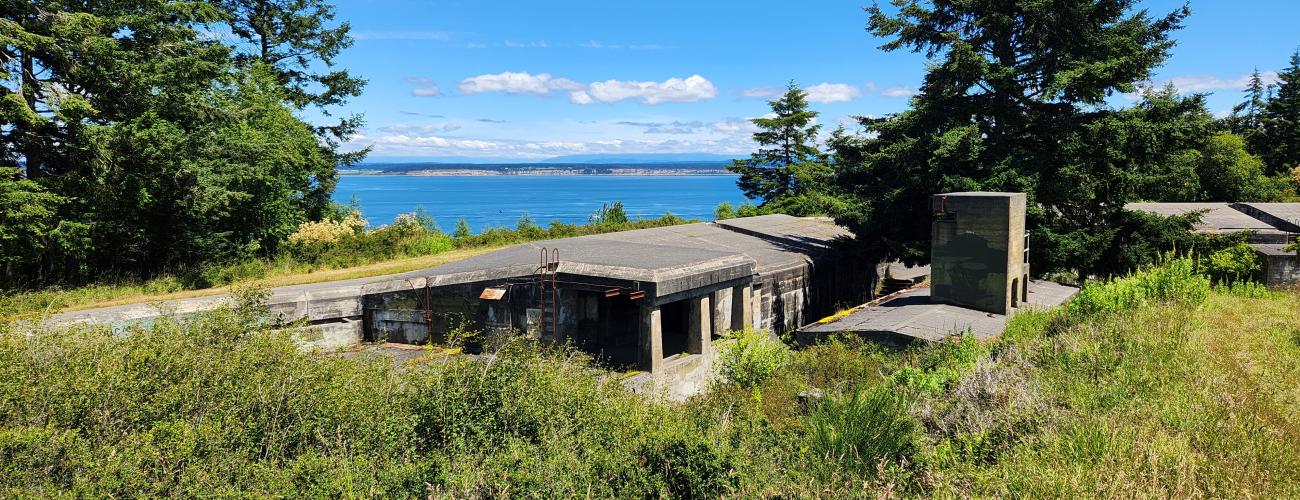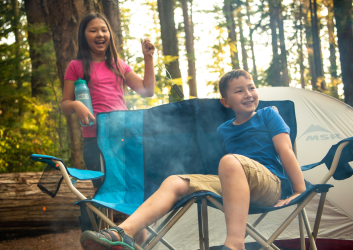A nephew’s adventures in state parks, part 2: Fort Worden Historical State Park
By Holly Sproul (Parks Forms Manager & Web Specialist) & Nephew Evan (Age 9)
After soaking up the sun at Sun Lakes-Dry Falls State Park, we ventured to the westside of the mountains to cool off at Fort Worden Historical State Park in Port Townsend.
When we arrived, there was “a bit of winds the first night, and a little rainy. It was nice to go from the Sun Lakes heat to the rain at Fort Worden,” Evan said.
With the wind, we were able to fly a kite.
We learned we needed “a sturdy kite with thicker string, maybe try a fighter kite,” Evan noted.
At the campsite, we roasted hot dogs over the fire and watched a small group of deer walk by. Evan used our binoculars to watch them graze on the grass and saunter by.
We also tried deconstructed banana s’mores. Evan toasted a marshmallow and put on a slice of banana, he also tried adding chocolate.
He said it was “good but not,” but still suggested people give a try.
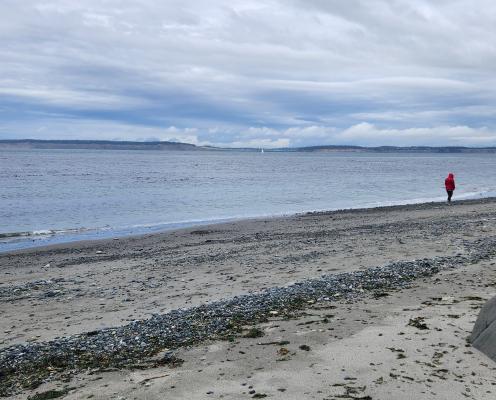
Beach exploration
Beach exploration was a must, which “it is beautiful, honestly.”
Along the beach, we found different shaped driftwood.
“There are tons of gunk if it’s low tide and I mean TONS, it’s literally everywhere,” Evan said.
“There are huts made out of wood, no idea how they got there or who made them, they are just there.”
Just be careful of the long seaweed, he adds. “If you’re not paying attention you could trip over them. It actually happened to me.”
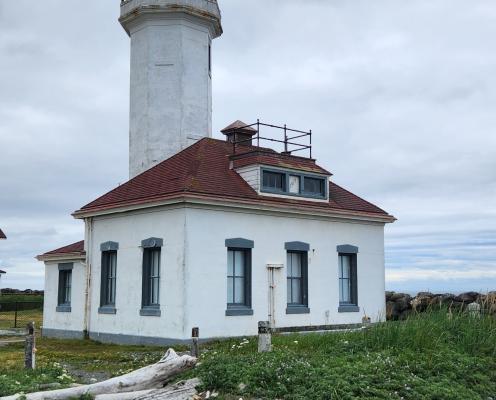
We also checked out Point Wilson Lighthouse.
Evan thought “that was really cool because I couldn’t believe you could actually get tours.”
Although tours weren’t operating during our stay, Evan said he would definitely go back for a tour.
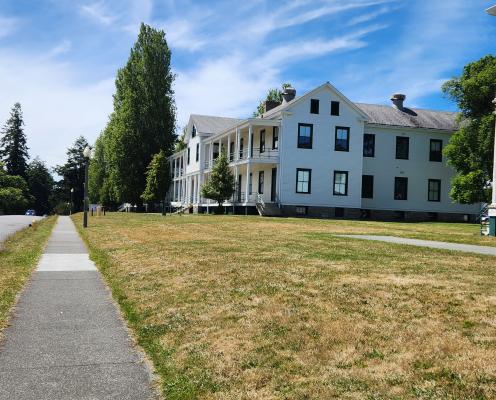
Exploring Fort Worden
“I’d revisit just to go in there even though it’s a couple hour drive. If you want to go in, I’d recommend going in except without a flashlight. Even a phone flashlight would work.”
On the first night, we checked out Kinzie Battery, which is right next to the Beach Campground. With the light rain coming down, it added to the feeling of yesteryears and long-ago stories created atop and inside the building.
Evan noted, “The battery is absolutely giant with three stories. I definitely liked exploring up there.”
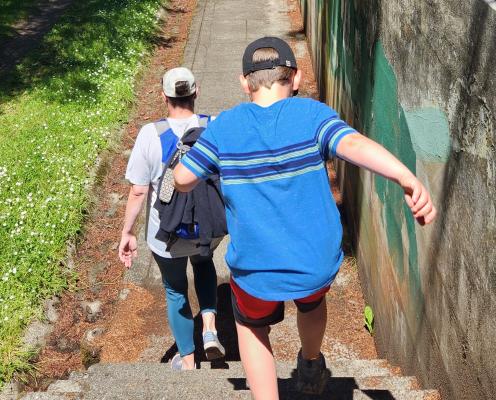
He felt it was not dangerous but advised, “Definitely no ladders unless you have grippy shoes especially if it rains because they’re rusted. Most ages, I’d recommend if you’re near the edge with no railing then don’t go close to the edges, unless there’s a railing you can look over.”
Evan explored the battery like a kid in a military candy store, climbing every ladder he came across and following every path.
It was a nice way for us to wind down after a full day of travel, although “we weren’t able to go inside, cause we forgot our flashlights. I’d revisit just to go in there even though it’s a couple-hour drive. If you want to go in, I’d recommend going in except without a flashlight. Even a phone flashlight would work.”
“There’s tons of gunman towers, it’s really cool honestly. It’s absolutely incredible they dug out miles of dirt for the batteries to be hidden so well in the ground.”
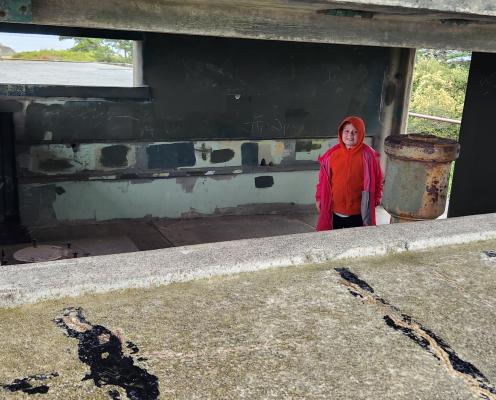
To see the other batteries atop Artillery Hill, we took the Beach Campground Trail.
“The hike can be kinda grueling, but really nice going down,” Evan noted.
“Hiking up the hill was really hard, seriously, but it’s worth it. You get beautiful views on beautiful days. It was definitely really cool (on the trail), if you get to this really clear point you can see a ton of things. If there’s like a cruise boat or yacht leaving, you can have a couple of those in your picture.”
The other batteries atop the hill “went on for a mile or two. Definitely different than the one in the campground. If you walk a lot, you can go down the entire thing like we did. It is extremely long, it’s like a mile maybe two. There is a tunnel that you think is going to be deep, but it’s not that deep, as in long. There are tons of gunman towers, it’s really cool honestly. It’s absolutely incredible they dug out miles of dirt for the batteries to be hidden so well in the ground.”
After the hike, we drove through the fort to look at the buildings and other attractions.
Although we did not rent one of the officer’s quarters, “it’d be cool to rent and stay in one of them,” Evan said.
We landed at the Coast Artillery Museum where Volunteer Ron Raplee gave us a really cool tour. Inside there is an old telephone switchboard, soldiers’ sleeping quarters and artillery from across the centuries.
There is also a “spotlight they would send signals with, using Morse code to open and close it,” Evan recalled.
“There’s a really cool working display of how a placement gun looked and operated in one of the batteries while protecting the area from potential enemy.”
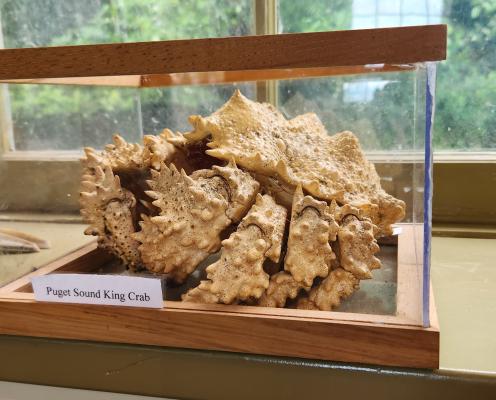
Port Townsend Marine Science Center
“It was cool looking through the microscopes to view items.”
At the museum, we learned about pollution and its effects on aquatic life, mainly whales.
“Polluting is bad,” Evan said.
“They can get killed or severely hurt because it’s plastic, aluminum, paper. All that stuff can hurt, especially can holders can get stuck on baby turtle necks.”
There were numerous hands-on displays, including viewing items under a microscope. Displays included seashells, sand, part of a beehive and more.
“It was cool looking through the microscopes to view items,” Evan said.
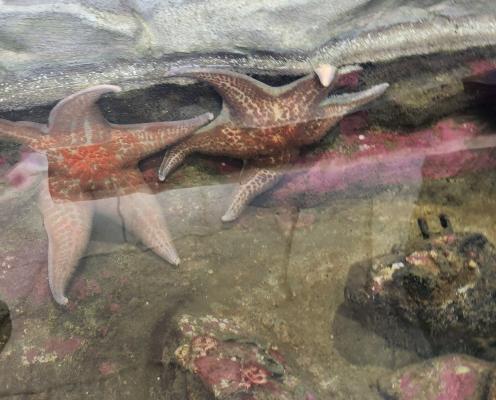
At the aquarium on the pier, we “saw the octopus, starfish and sea urchin are all really, really cool especially to see them up so close,” Evan recalled.
We learned to leave beach life alone if we come across any.
If you go to the aquarium, look for the “sea pickles or slugs whatever they are, they are interesting little creatures. They honestly look like giant short worms,” Evan said.
Evan’s rating: “It’s hard because some points are very gloomy and the weather was not too good but still good,” he said.
“I love military history stuff so I might rate this a bit higher than someone that has different interests. For me, it’s like a 9.6 because of a lot of activities and I love the military history. For someone who’s not into military stuff, I think it would still rate as a 6 or 7.”
Adult tips
If you have the time, this area is worth a week of exploring and it still might not be enough time. A full day or two can be occupied by exploring the established buildings across campus, including a castle, officer houses and old barracks.
If military history isn’t your thing, there’s still so much to do. The aquarium and museum are a great place for engagement specific to aquatic life. There is also plenty of Junior Ranger and interpretive programs as well. We didn’t leave ourselves much time to deep dive into everything, so don’t shortchange yourself like we did.
Enjoy part 3 of this blog series here, where Holly and Evan visit Maryhill and Goldendale Observatory State Parks.
Originally published September 26, 2024

